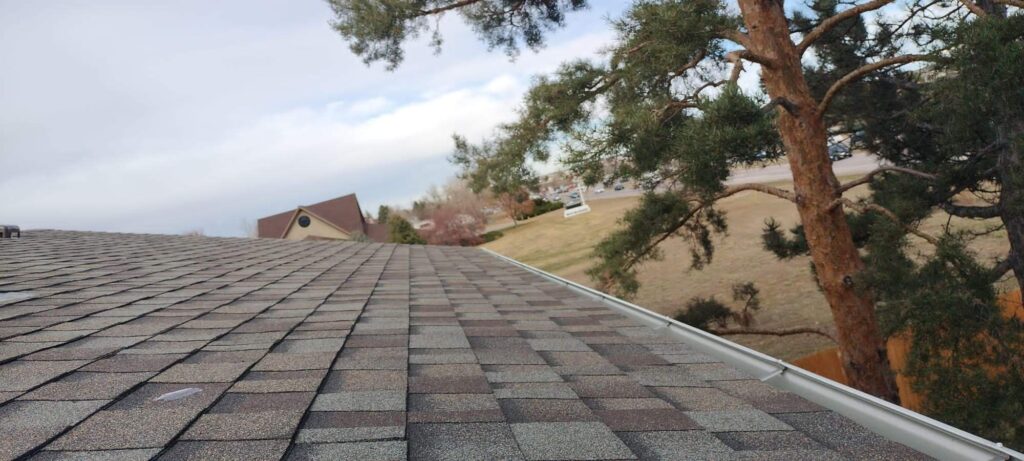Hailstorms are among the most damaging weather events for residential and commercial roofs. While hail can vary in size and intensity, even seemingly small hailstones can compromise the structural integrity of a roof—especially when roofing materials are aging or previously compromised. Understanding which types of hailstones pose the greatest threat allows property owners to respond quickly, minimize long-term damage, and extend the lifespan of their roofs.
The Severity of Hail: Size Matters in Roofing Damage
The size of hailstones directly correlates to the level of damage they can cause. As professionals offering roofing in Denver, we have seen firsthand how hail of varying diameters affects different roofing materials. Here’s a breakdown of what to expect based on size:
Small Hailstones (Up to 0.75 Inches in Diameter)
While typically underestimated, dime-sized hailstones can weaken roof structures under the right conditions. Roofs with aged shingles or compromised flashing are particularly vulnerable. The cumulative effect of repeated exposure to small hailstones may lead to premature degradation.
- Common signs of damage: Loss of protective granules, surface bruising, and soft spots in asphalt shingles.
- Best practices: Schedule routine inspections during hail season to identify early damage.
Medium Hailstones (1 to 1.25 Inches in Diameter)
Quarter-sized hail is where the threat becomes more pronounced. This size can lead to cracked or torn shingles, especially on older or lower-quality roofing systems.
- Materials at risk: Asphalt, cedar shake, and composite shingles often show punctures or lifted edges.
- Insurance note: This size is often the threshold for valid insurance claims based on visible damage.
Large and Severe Hailstones (1.5 Inches and Larger)
Once hailstones exceed the size of a golf ball (1.75 inches+), the risk of structural damage increases significantly. These hailstones can puncture through shingles, split wood shakes, crack slate tiles, and dent metal roofing systems.
- Catastrophic damage: Severe hail can dislodge flashing, damage gutters, and even deform roof decking beneath the shingles.
- Immediate action required: Post-storm inspections by qualified Denver roofing contractors are essential.
Hail Impact on Common Roofing Materials
Different roofing systems respond to hail in unique ways. Understanding these distinctions helps homeowners and building managers plan for damage prevention and targeted repairs.
Asphalt Shingles
Asphalt shingles are widely used across Denver due to their affordability and versatility. However, they are particularly vulnerable to granule loss, which exposes the fiberglass base and leads to accelerated deterioration.
- Damage indicators: Black substrate showing through, circular dents, and granules in gutters.
Metal Roofing
Metal roofs offer excellent hail resistance, especially those rated Class 4 for impact resistance. However, cosmetic damage such as dents and scuffing can affect not only appearance but also protective coatings.
- Visible damage: Circular depressions across panels, chipping of surface coatings, and fastener loosening.
Tile and Slate Roofing
These roofs are incredibly durable under normal conditions but are susceptible to cracking and shattering when hit by large hailstones.
- Red flags: Clean punctures or edge fractures, often accompanied by falling debris.
The Importance of Prompt Roof Inspections After Hailstorms
Roof damage from hail isn’t always immediately visible. Minor impacts can result in delayed leaks and internal moisture infiltration. A professional inspection conducted by licensed roofing companies in Denver is critical for early detection.
- Use drones or thermal imaging for non-invasive assessments.
- Evaluate interior spaces for water stains, ceiling discoloration, and attic moisture.
Navigating Roof Repairs and Insurance Claims in Denver
Hail damage qualifies for insurance reimbursement in many cases, but policyholders must act quickly. We recommend homeowners follow these steps:
- Document the damage: Capture time-stamped photographs and note all visible impacts.
- Contact a certified roofer in Denver for a written inspection report.
- Initiate the claim with your insurer using all gathered documentation.
Working with established roofing contractors in Denver Colorado increases the credibility of your claim and ensures that your roof is restored to code-compliant standards.
How to Choose the Right Roofing Company After a Hailstorm
Not all roofing companies Denver offers are equally equipped to handle hail-related repairs. When selecting a service provider, look for:
- HAAG-certified inspectors or similar credentials
- Strong local reviews and a physical business presence in Denver, Colorado
- Transparent pricing models and insurance coordination support
For example, Tried and True Roofing has built a strong reputation for delivering exceptional service in roof repairs Denver and post-storm recovery, helping residents navigate complex insurance processes with ease.
Prevention Tips: Prepare for Denver’s Hail Season
Proactive roofing care can reduce hail damage severity and improve longevity:
- Upgrade to impact-resistant shingles, ideally Class 4-rated.
- Install protective ridge caps and reinforced flashing in vulnerable areas.
- Keep gutters clear to prevent ice dams and water backup during hailstorms.
- Schedule pre-storm inspections annually in spring and summer.
Conclusion
Hailstorms in Denver are unpredictable, but the consequences for your roof don’t have to be. Recognizing the risk based on hail size, understanding how different materials react to impacts, and responding swiftly after each event ensures your home remains protected. Collaborating with experienced Denver roofing contractors allows for expert inspections, seamless repairs, and effective insurance handling. Whether it’s a small hailstorm or a damaging weather event, a proactive roofing strategy is the best defense for your property.


